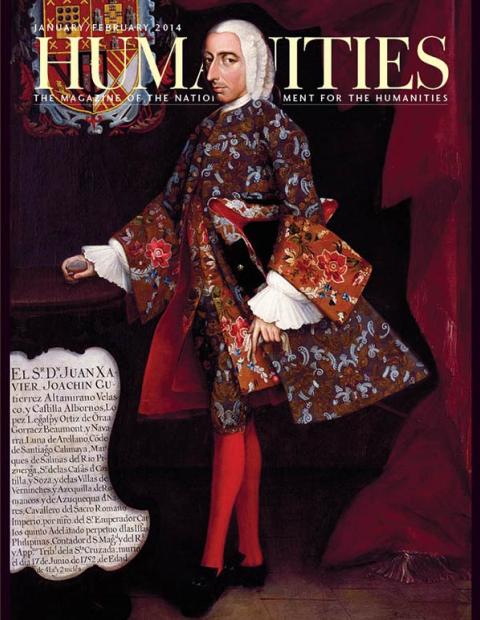James F. O’Connell, the “Tattooed Man,” arrived in New York City in 1835, causing much consternation. If a lady so much as glanced at him, her future children would be born just as hideously inked as he was—covered in thick, patterned black bands that curved down and around their hands, arms, legs, and backs. Or so the churchmen told their flocks.
O’Connell, an Irish sailor, acquired his full-body tattoo during a stint as a castaway in the South Pacific’s Caroline Islands during the late 1820s and early 1830s.
After their ship sunk, O’Connell and his shipmate, George Keenan, were taken in by inhabitants of the island of Pohnpei—who were not cannibals, O’Connell emphatically states in his memoir. Within a few days, the two were bustled off to an isolated hut where five or six women, “savage printers” armed with ink and thorns, set about providing the newcomers with the markings that would smooth their way into the community. The resulting tattoo, called pelipel, made O’Connell “fully human” in the world of the South Pacific, writes Juniper Ellis in her book Tattooing the World (Columbia University Press, 2008), for which NEH provided research support.
Keenan, however, screamed, cursed, struggled, and threatened until he was let go with nothing more than a partial tattoo on his arm. As a result, he was branded as a coward and mocked and reviled.
O’Connell, however, was adopted by a chief and married (or so he claims) to his only daughter. Keenan—who failed to achieve full status as an adult male—won only a small margin of acceptance by playing Irish folk tunes on a fife he fashioned from cane.
O’Connell and Keenan eventually escaped from the island on the American schooner Spy of Salem, only to be thrown in prison in Manila. After their release, the two made their way around China before arranging to work their way to Canada. They avoided a cholera epidemic in Halifax by detouring to St. John, New Brunswick, but Keenan had taken ill and was retained in a hospital there by authorities. For fear of being put into quarantine himself, O’Connell skipped town and headed south.
In New York, he came to realize that his tattoos left him just as anomalous and isolated in New York as Keenan’s lack of tattoos had made him in Pohnpei. Women and children ran away screaming. Priests and pastors warned against him. And so, O’Connell, like Keenan in Pohnpei, looked to performance as a means of survival.
O’Connell became the first man to display his tattoos in the United States. Featured in melodramas and circuses, he became one of the highlights of P. T. Barnum’s “freak show” American Museum in 1842. He published a memoir in 1845 about his time in Pohnpei. One story he recalls is about a group of Pohnpeian women who made cloaks from the pages of a book he managed to save from his ship. O’Connell wrote that the women thought the book connected him to his people and his past, just as their tattoos connected them to theirs. As a result, they were horrified when the pages dissolved in the rain, claiming that his people’s “tattoo” was “good for nothing,” because “it would not stand.”
“That the islanders’ tattoo will stand, my body is witness,” O’Connell concluded.

